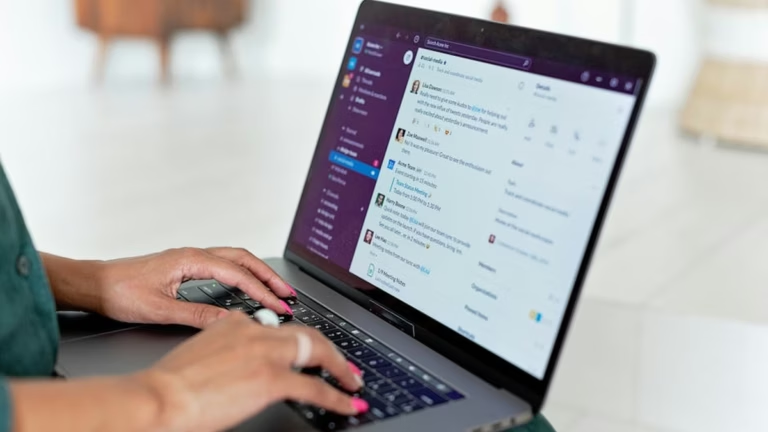Telehealth Future: Remote Monitoring & You
Imagine a world where healthcare is proactive, personalized, and readily accessible from the comfort of your own home. This isn’t a futuristic fantasy; it’s the rapidly evolving reality of telehealth. The telehealth future is here, driven by technological advancements and a growing demand for convenient and effective healthcare solutions. This post explores the transformative power of remote monitoring and personalized healthcare within the telehealth landscape, providing insights into how these innovations are reshaping patient care and improving health outcomes.
The Rise of Telehealth: A Paradigm Shift in Healthcare
Telehealth, encompassing a broad range of technologies and services to provide virtual healthcare, has experienced exponential growth in recent years. This surge is fueled by several factors, including:
- Increased access to care, especially for rural and underserved populations.
- Improved convenience and reduced travel time for patients.
- Cost-effectiveness compared to traditional in-person visits.
- Enhanced patient engagement and adherence to treatment plans.
The COVID-19 pandemic further accelerated the adoption of telehealth, demonstrating its crucial role in maintaining continuity of care during times of crisis. As digital health solutions become more sophisticated and integrated into our daily lives, the Future of healthcare is undeniably intertwined with telehealth.
Remote Patient Monitoring: Empowering Proactive Care
Remote patient monitoring (RPM) is a cornerstone of the telehealth Future. It involves using technology to collect and transmit patient health data from a remote location, typically the patient’s home, to healthcare providers. This data can include vital signs (e.g., blood pressure, heart rate, oxygen saturation), weight, glucose levels, and activity levels.
Benefits of Remote Patient Monitoring
RPM offers numerous advantages for both patients and providers:
- Early Detection of Health Issues: RPM allows for the early detection of deteriorating health conditions, enabling timely interventions and preventing hospitalizations. For example, a patient with heart failure whose weight is consistently increasing can be promptly alerted and treated, potentially avoiding a costly and stressful emergency room visit.
- Improved Chronic Disease Management: RPM empowers patients with chronic conditions like diabetes, hypertension, and COPD to actively manage their health. Regular monitoring and feedback from healthcare providers can lead to better adherence to medication regimens, lifestyle modifications, and overall improved health outcomes.
- Enhanced Patient Engagement: By actively participating in their own care through RPM, patients become more engaged and motivated to make healthy choices. This increased engagement can lead to improved self-management skills and a greater sense of control over their health.
- Reduced Healthcare Costs: By preventing hospitalizations and improving chronic disease management, RPM can significantly reduce healthcare costs. Studies have shown that RPM programs can lead to substantial savings for both patients and healthcare systems.
Examples of Remote Patient Monitoring in Action
Consider these real-world examples of RPM:
- Diabetes Management: Patients with diabetes can use continuous glucose monitors (CGMs) to track their blood sugar levels in real-time. This data is transmitted to their healthcare provider, who can make adjustments to their medication or diet as needed.
- Hypertension Management: Patients with hypertension can use home blood pressure monitors to regularly check their blood pressure. This data is transmitted to their healthcare provider, who can monitor their progress and make adjustments to their medication as needed.
- Heart Failure Management: Patients with heart failure can use wearable sensors to track their weight, heart rate, and activity levels. This data is transmitted to their healthcare provider, who can identify early signs of fluid overload and adjust their medication as needed.
Personalized Telehealth: Tailoring Care to Individual Needs
The telehealth future is not just about providing care remotely; it’s about providing personalized care that is tailored to each individual’s unique needs and preferences. Personalized telehealth leverages data analytics, artificial intelligence (AI), and other technologies to create customized treatment plans and interventions.
Key Elements of Personalized Telehealth
Personalized telehealth encompasses several key elements:
- Data-Driven Insights: Using data collected from RPM devices, electronic health records (EHRs), and other sources to gain a comprehensive understanding of each patient’s health status and risk factors.
- AI-Powered Diagnostics: Utilizing AI algorithms to analyze patient data and identify potential health problems early on.
- Customized Treatment Plans: Developing individualized treatment plans that take into account each patient’s specific needs, preferences, and goals.
- Virtual Coaching and Support: Providing patients with personalized coaching and support through virtual channels to help them adhere to their treatment plans and make healthy lifestyle choices.
Benefits of Personalized Telehealth
Personalized telehealth offers several benefits over traditional, one-size-fits-all approaches to healthcare:
- Improved Outcomes: By tailoring care to individual needs, personalized telehealth can lead to better health outcomes and improved quality of life.
- Increased Patient Satisfaction: Patients are more likely to be satisfied with care that is personalized and responsive to their individual needs.
- Enhanced Engagement: Personalized telehealth can increase patient engagement by providing them with relevant and timely information and support.
- Reduced Costs: By preventing complications and improving adherence to treatment plans, personalized telehealth can help reduce healthcare costs.
Overcoming Challenges and Embracing the Telehealth Future
While the telehealth future holds immense promise, there are also challenges that need to be addressed:
- Data Security and Privacy: Ensuring the security and privacy of patient data is paramount. Robust security measures and compliance with regulations like HIPAA are essential.
- Digital Divide: Addressing the digital divide and ensuring that all patients have access to the technology and internet connectivity needed to participate in telehealth programs.
- Reimbursement Policies: Advocating for fair and sustainable reimbursement policies for telehealth services.
- Interoperability: Promoting interoperability between different telehealth platforms and EHR systems to ensure seamless data exchange.
Despite these challenges, the momentum behind telehealth is undeniable. By embracing innovation, addressing potential barriers, and focusing on patient-centered care, we can unlock the full potential of the telehealth future and create a healthcare system that is more accessible, affordable, and effective for all. The convergence of remote patient monitoring and personalized telehealth represents a significant step towards a more proactive and patient-centric healthcare paradigm. As technology continues to evolve, we can expect even more innovative solutions to emerge, further transforming the way we access and experience healthcare. The virtual healthcare revolution is here, and it’s empowering individuals to take control of their health and well-being.
Practical Tips for Embracing the Telehealth Future
Here are some actionable tips for individuals and healthcare providers to embrace the telehealth future:
For Individuals:
- Explore telehealth options: Talk to your doctor about whether telehealth is right for you.
- Familiarize yourself with telehealth technologies: Learn how to use telehealth platforms and devices.
- Advocate for telehealth: Support policies that promote access to telehealth services.
For Healthcare Providers:
- Invest in telehealth infrastructure: Implement telehealth platforms and train staff on how to use them.
- Develop personalized telehealth programs: Tailor telehealth services to meet the specific needs of your patients.
- Promote telehealth to your patients: Educate patients about the benefits of telehealth and encourage them to use it.
The telehealth future is not just about technology; it’s about empowering individuals to take control of their health and well-being. By embracing these tips, we can all contribute to creating a healthcare system that is more accessible, affordable, and effective for all.
References
-
Centers for Disease Control and Prevention (CDC)
– Leading national public health institute of the United States. -
World Health Organization (WHO)
– Global authority on international public health. -
Mayo Clinic Healthy Lifestyle
– Evidence-based health advice from medical experts.






